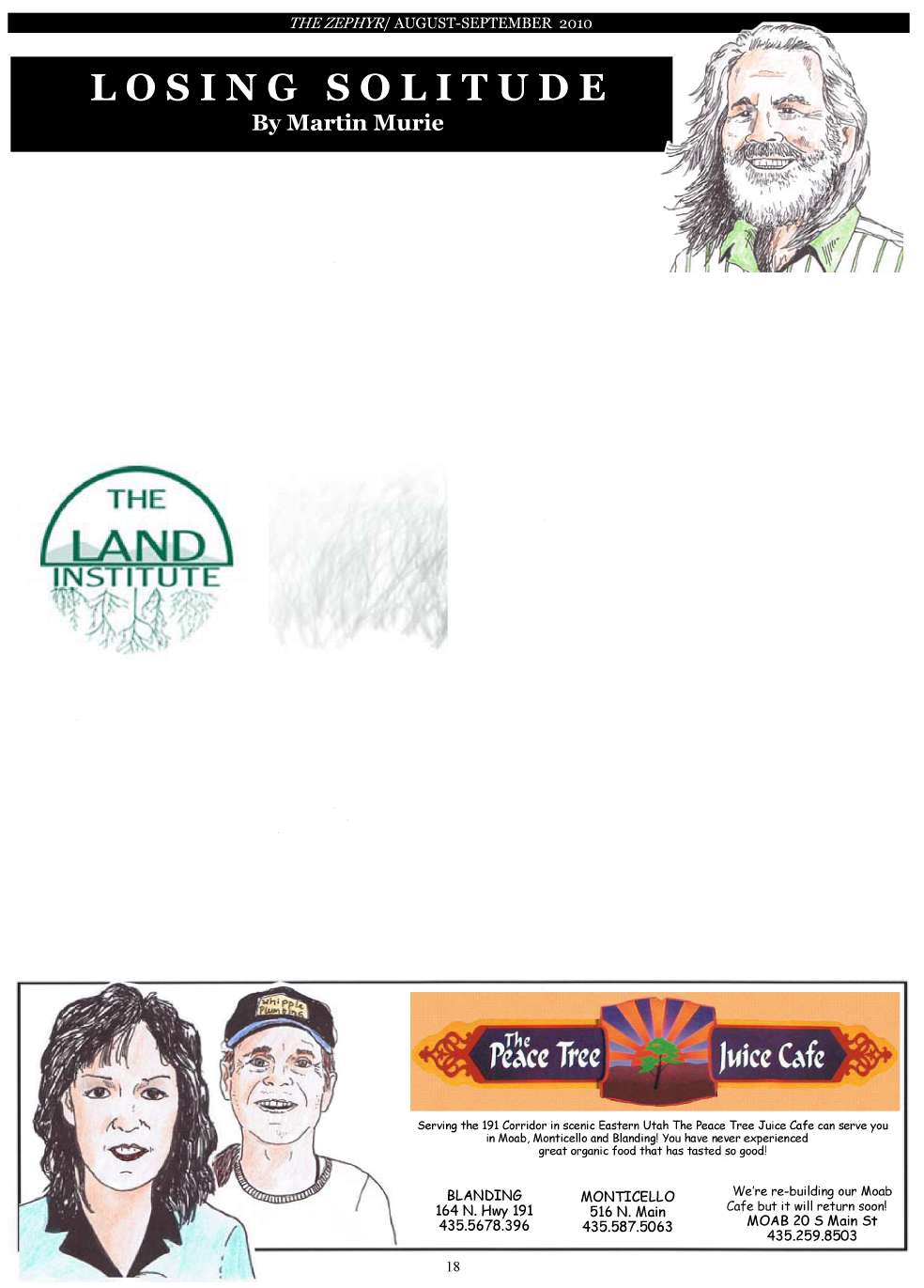<<Prev Home PDF Next>>

LONG RANGE PROGRAM FOR HUMAN SURVIVAL
For
decades the Land Institute at 2440 E. Water Well Road, Salina, KS 67401
(info@landinstitute.org) has pursued one goal: the perennialization of
the conventional and world-wide annual grain crops like wheat, corn,
soybeans, upland rice, sunfower, grain sorghum and Kernza—the Land
Institute’s trademark—named for a wild perennial wheat grass. Kernza is
a staple food crop in Asia and Africa. Here is the frst sentence from
the Institutes’ Mission Statement: “When people, land and community are
as one, all three members prosper; when they relate not as members but
as competing interests, all three are exploited.”
And
here is an excerpt from “Our Work:” “Thousands of new perennial grain
plants live year-round at the Land Institute, prototypes we developed
in pursuit of a new agriculture that mimics natural ecosystems. Grown
in polycultures, perennial systems require less fertilizer, herbicide
and pesticide. Their root systems are massive. They manage water
better, exchange nutrients more effciently and hold soil against the
erosion of water and wind.”
The
advantages of a turn to perennialization are tremendous. Perennials
have much deeper root systems than annuals, can reach deeper strata of
water and nutrients and they can reduce erosion by covering acres of
cropland all year round.
The latest issue of the Land Report (issued three times a year) outlines POSSIBLE FARM BILL MILESTONES:
Another question: “Won’t the seed yield of perennial always be limited by the need to save energy for over-wintering?”
Answer:
“Annuals and perennials both have to save energy to survive winter . .
. one as seed. It isn’t clear that over-wintering as seed takes more
energy than over-wintering as a perennial. Even if it does, many
perennials have more energy available each year because their growing
season is longer and they don’t have to establish as a seedling each
spring. Perennials can even grow during dry spells when annuals are
limited by roots too short to reach moisture.”
“Can no-till farming match perennials at protecting cropland and water?”
Answer.
“No. Although no-till technology has reduced erosion, problems remain
with the biological limits of annual plants. They are often too small
for much of the year and relatively ineffcient at capturing water and
nutrients. What they let slip by can exceed that of perennials by 500
percent. This wasted water carries soil nutrients, fertilizer and
pesticides that pollute rivers, lakes and coasts. Annual crops will
always have this limitation.”
There are other questions and answers. If your curiosity is aroused here’s the phone number: 785-823- 5376
Alison
and I frst met Wes Jackson, the founder of the Land Institute, at
Clarkson University, Potsdam, New York, and had the chance to hear him
again at the Glen Helen Association’s meeting a few weeks ago. Wes
still has his wry sense of humor. The motif of the evening was a
graphic comparison of perennial root systems compared to annual’s root
depth. Astounding!
The
Land Institute gives away hybrid seeds to any scientist interested in
developing perennials. Compare Monsanto Corporation: patented seeds.
Latest reports claim that Monsanto controls over 80 percent of the seed
crop in the United States.
“When
people, land and community are as one, all three members prosper; when
they relate not as members but as competing interests, all three are
exploited.”
“2015--Subsidies encourage more perennial grass for production of meat, eggs and milk.
2020--The frst perennial grain, Kernza, becomes available to small number of commercial farms, while seed supplies build.
2030--Farmers and consumers learn about the new perennial grain crops.
2040--Three decades after 40 percent of the waters were deemed unft, it is again safe to swim in every stream.
2045--A variety of perennial grain crops are available across the country with growth methods that include grazing and haying
2050--Former dead zones at river mouths are again thriving as fsheries
2055--Perennials
cover 80 percent of farm acreage, a reversal of fve decades earlier.
Valuable annual crops grow only on the least erodable felds.”
The current issue includes a question-and-answer section:
The Land Institute
The
current issue of the Land Report has a page entitled Field Notes where
Wes Jackson is quoted as saying, “There will come a day when there
won’t be any economists. They’re the ones who believe in perpetual
motion machines.”
Here’s
another from that page: “THE RULE IS SIMPLE: The more machinery man
gets, the more machined he is. When the traveler gets off a horse and
into a machine, the tempo of his mind as well as the locomotion is
changed.” This quotation is from J.Frank Dobie’s The Mustangs.
Question: In 55 years we humans might not even be here. How can such a long period be met by any Farm Bill?
Answer.
“. . . we need to move as fast as possible. The sooner these crops are
made available, the more land we can save from degradation. Global
agricultural land likely will expand as human population grows toward
the forecast of 9 billion. . . . Where costly fertilizers, chemicals
and fuels are not an option, farming that is highly effcient and
conservative of natural resources is needed -- and will be needed even
more 25 years from now.”
. . . AN UPDATE FROM THE ACTIVIST FRONT
On
an entirely different subject, though war and perennials are, in real
life, intimately connected: Billions of dollars for war and not one
RELIABLE RED CENT to delay climate change, while the Agriculture
Department of the Federal Government has to endure the short-range
proft-seeking bills concocted by corporate lobbyists in Washington, D.C.